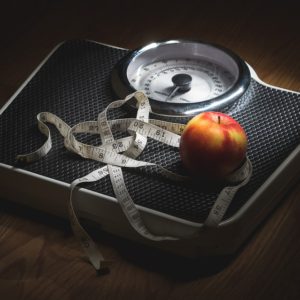This course is your first step toward a serious understanding of human nutrition. More than just a collection of information; this is a carefully developed program developed and tutored by university trained and experienced nutritional scientists; providing a sequence of learning experiences, including interaction one on one with our highly qualified tutors.
- It provides complimentary skills for people involved with food and health across a wide range of vocations (Health or fitness professionals through to chef’s and health food shop sales staff).
- It provides a starting point for persons wanting to work more specifically in the field of nutrition (Note: To work as a nutritionist or prescribe food supplements in most developed countries will require you to do far more study than the 100 hrs in this course)
- It provides the concerned individual with the knowledge needed to better manage their own diet, and that of those around them.
COURSE STRUCTURE
The nine lessons are as follows:
- Introduction to Nutrition
- The Digestive System
- Absorption & Enzymes
- Energy Value and Foods
- Carbohydrates and Fats
- Proteins
- Vitamins and Minerals
- Water
- Nutrient Disorders
AIMS
- Explain the role of different food types in human health.
- Explain the physiology of digestive processes.
- Recommend appropriate intake of vitamins.
- Recommend appropriate intake of minerals.
- Recommend appropriate food intake to meet an individual’s energy needs.
- Recommend appropriate carbohydrate intake.
- Recommend appropriate fat intake.
- Recommend appropriate protein intake.
- Recommend appropriate water intake in different situations.
- Recognise signs and symptoms of the major nutrient disorders.
WHAT THE COURSE COVERS
Here are some examples of things you may be doing:
- Distinguish between nutrition terms including: food, nutrition and diet.
- Distinguish between characteristics of all major food groups, including chemistry and foods which are a good source.
- Explain the significance of each of the major food groups, including:
- Carbohydrates
- Proteins
- Fats
- Minerals
- Vitamins
- Label on unlabelled illustrations, parts of the digestive system, including:
- Oesophagus
- Liver
- Stomach
- Gall bladder
- Pancreas
- Duodenum
- Ascending colon
- Caecum
- Appendix
- Transverse colon
- Descending colon
- Ileum
- Sigmoid colon
- Rectum
- Explain the function of different parts of the digestive system, including:
- Salivary Glands
- Liver
- Stomach
- Gall bladder
- Pancreas
- Duodenum
- Colon
- Ileum
- Rectum.
- Distinguish between digestion and absorption of food.
- Explain the different layers of the digestive tract, including:
- Mucosa
- Submucosa
- Muscularis
- Serosa.
- Explain different physiological processes involved in absorption
- Explain how different hormones control the digestive process, including:
- Gastrin
- Gastric Inhibitory Peptide
- Secretin Cholecystokinin.
- Explain the action of different digestive enzymes.
- Convert calories to joules.
- Explain the meaning of basal metabolic rate (BMR).
- Describe how the intake of different types of food may affect metabolic rate.
- Explain how different factors other than food intake can affect digestion, including stress and disease.
- Compare energy values of different foods, on a given food chart.
- Explain possible implications of mismatching food intake to individual’s energy needs, through over or under intake of energy requirements.
- List foods which are common sources of carbohydrate.
- List common foods in your own diet which are poor sources of carbohydrate.
- Distinguish between monosaccharides and disaccharides in your own normal diet.
- Explain relative values of alternative sources of carbohydrates.
- Explain factors which affect the bodies demand for carbohydrate.
- Develop guidelines to determining appropriate carbohydrate intake, in accordance with an individual’s specific requirements.
- List foods which are a common source of fats.
- Distinguish between saturated and unsaturated fats in the diet of a specific person.
- Explain the relative value of alternative sources of fats.
- Explain factors which affect the bodies demand for fat.
- Explain the role of fat in the body, including an explanation of different physiological processes involving fat.
- Develop a set of guidelines to determining appropriate fat intake, in accordance with an individual’s specific requirements.
- List foods which are a good source of protein.
- Explain the role of protein in the body, including examples of different physiological processes involving protein.
- Explain relative values of different sources of protein.
- Explain factors which affect the bodies demand for protein.
- Develop guidelines to determining appropriate fat intake, in accordance with an individual’s specific requirements.
List different sources for each of several different minerals considered essential to human health. - Explain the role of different minerals in the body.
- Consider the relative values of different sources of minerals in your own diet, to determine minerals which may be supplied in inappropriate quantities.
- Describe symptoms of different nutrient disorders including deficiencies and toxicities.
- Explain the use of different mineral supplements in a specified human diet.
- Distinguish between sources of different types of vitamins which are important to human health, including:
- Retinol
- Vitamin D
- Vitamin E
- Vitamin K
- Ascorbic acid
- Thiamine
- Riboflavin
- Nicotinamide
- Pyridoxine
- Pantothenic acid
- Biotin
- Cyanocobalamin
- Folacin.
- Explain the role of different vitamins in the body.
- Explain the relative values of different sources of each of five vitamins.
- Explain proliferation of vitamin supplement usage in modern society.
- Describe symptoms of five different vitamin disorders including deficiencies and toxicities.
- Explain the role of water in the body, for different physiological processes.
- List factors which affect the body’s requirement for water.
- Compare different methods of purifying water, including different commercially available water purifiers.
- Explain the physiology of dehydration, at different levels.
- Discuss the affect of different water impurities on human health.
- Distinguish between the signs and symptoms of forty common problems associated with nutritional disorders, including:
- deficiencies
- sensitivities
- diseases
- Describe different techniques used by health practitioners for determining food/nutrition disorders.
- Explain the importance of obtaining a recommendation from a medical practitioner, when a nutritional disorder is suspected.
- Explain the significance of “second opinion”, when diagnosing nutrient disorders.





